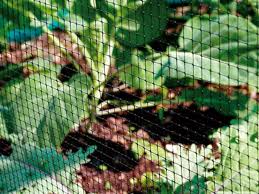
Enhancing Your Garden’s Success with Garden Netting
Introduction: Gardens are often a labor of love, requiring dedication, time, and effort to cultivate thriving plants. However, pests, birds, and harsh weather can threaten the fruits of your labor. This is where garden netting becomes a valuable ally. Acting as a protective shield, garden netting offers a range of benefits, from deterring pests to safeguarding delicate plants. Let’s explore the diverse advantages of garden netting and how it can elevate your gardening experience.
1. Pest Protection: One of the primary functions of garden netting is pest control. Insects and small animals can wreak havoc on your plants, devouring leaves, fruits, and vegetables. Garden netting acts as a physical barrier, preventing pests from accessing your precious crops. From aphids to birds, garden netting creates a protective barrier that safeguards your plants without resorting to harmful chemicals.
2. Bird Deterrence: Birds are not only a symbol of natural beauty but can also pose a significant threat to your garden. They often view ripening fruits and vegetables as a tempting feast. However, with garden netting draped over your plants, you can effectively deter birds without causing them harm. The fine mesh of the netting ensures that birds cannot penetrate it, allowing your crops to ripen undisturbed.
3. Weather Shield: Extreme weather conditions, such as hailstorms or heavy rain, can damage delicate plants and disrupt their growth. Garden netting provides a protective shield against these elements, minimizing the risk of damage. By covering your garden beds or individual plants with netting during inclement weather, you can mitigate potential losses and ensure the continued health of your garden.
4. Sun Protection: While sunlight is essential for plant growth, excessive exposure to intense sunlight can scorch leaves and cause sunburn. Garden netting offers a solution by providing shade and reducing the intensity of sunlight reaching your plants. This is particularly beneficial for delicate seedlings or heat-sensitive crops, allowing them to thrive in a more moderate environment.
5. Support for Climbing Plants: For climbing plants such as peas, beans, or cucumbers, garden netting serves as a supportive structure. By installing netting trellises or vertical supports, you can guide the growth of these plants upward, maximizing space and improving air circulation. Garden netting provides a sturdy framework for vines to climb, reducing the risk of damage and ensuring efficient growth.
6. Disease Prevention: In addition to warding off pests, garden netting can also help prevent the spread of diseases among plants. By creating a physical barrier, netting reduces the likelihood of pathogens being transferred between plants through contact or airborne transmission. This proactive approach to disease prevention can significantly improve the overall health and vitality of your garden.
Conclusion: Garden Netting is a versatile and invaluable tool for any gardener seeking to protect their plants and maximize yields. From pest control to weather protection, the benefits of garden netting extend far beyond simple aesthetics. By incorporating garden netting into your gardening routine, you can create a safer, more productive environment for your plants to thrive. Whether you’re a seasoned gardener or just starting out, investing in quality garden netting is sure to yield bountiful rewards for seasons to come.